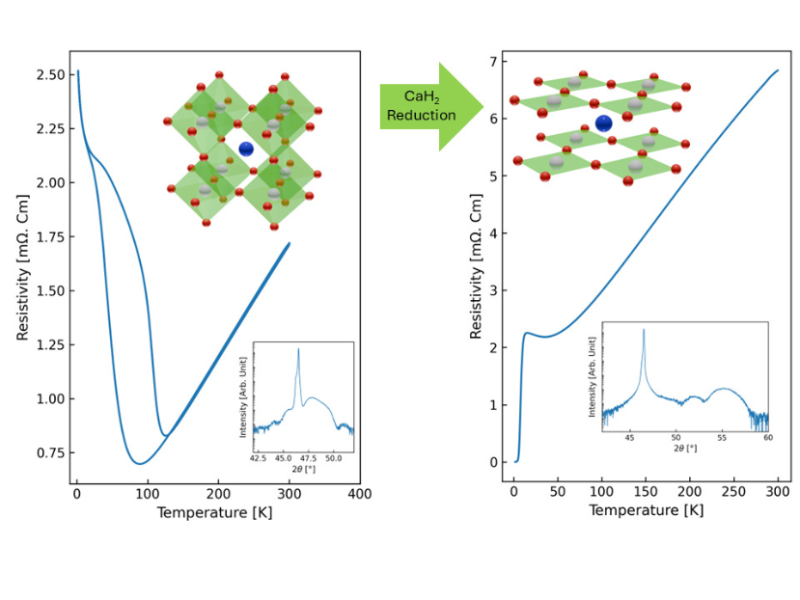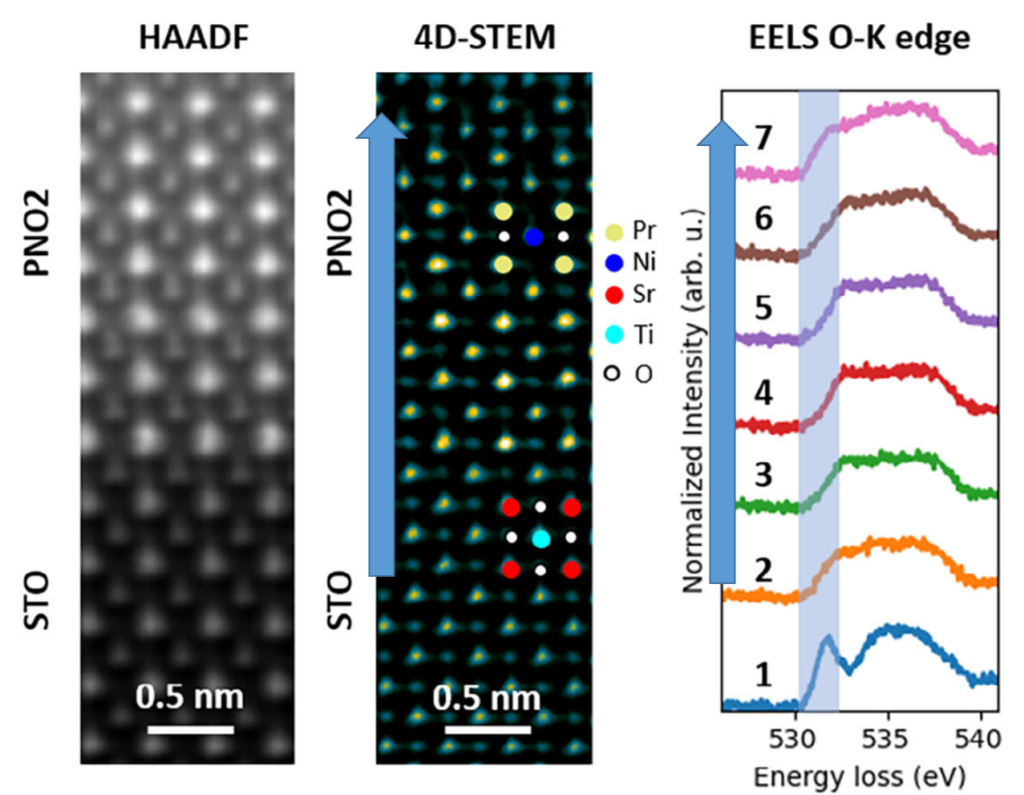a) HAADF-STEM image of a SrTiO₃–capped PrNiO₂ film . b) 4D-STEM divergence-COM analysis showing clean infinite-layer phase without the presence of any apical oxygen. c) Real-space evolution of the O-K edge EELS fine structure.
Cuprates, copper-based oxides, are renowned for their high-temperature superconducting properties. Doping—the process of introducing foreign atoms (dopants) into the material’s structure—modulates their electronic properties and promotes superconductivity by altering the distribution of electrons or holes in the lattice, thereby modifying the electronic interactions responsible for the phenomenon.
More recently, nickelate thin films, which exhibit superconducting properties similar to those of cuprates, have attracted significant interest in the research community. Numerous studies have sought to draw direct comparisons between the physics of these two systems.
In this context, scientists from the Strasbourg Institute of Materials Physics and Chemistry (CNRS/University of Strasbourg) with collegues from LPS have shown that the origin of superconductivity in nickelates should be considered a distinct phenomenon. Their results demonstrate that, unlike cuprates, the superconducting state in nickelates can be stabilized without doping.
These findings were obtained for undoped praseodymium nickelate PrNiO₂ (Ni¹⁺) layers, stabilized by topotactic reduction² of thin films of the perovskite phase PrNiO₃ (Ni³⁺), deposited on SrTiO₃ substrates (Image). A combination of microscopy and spectroscopy techniques confirmed that the superconducting state is not due to unintentional chemical doping. Scanning transmission electron microscopy revealed the absence of residual or excess oxygen atoms. Furthermore, X-ray absorption spectroscopy (XAS) and resonant inelastic X-ray scattering (RIXS) measurements at the ESRF synchrotron radiation source (Grenoble, France) confirmed that the nickel atoms exhibit characteristics fully consistent with reduced Ni¹⁺. This single electron, removed from the nickel electron cloud during topotactic reduction, is sufficient to induce superconductivity—without requiring structural modification via doping.
The very high crystalline quality observed in these samples may even be a key factor in the emergence of superconductivity.
This discovery was published in Advanced Materials.
Editor: CCdM
Référence
Hoshang Sahib, Aravind Raji, Francesco Rosa, Giacomo Merzoni, Giacomo Ghiringhelli, Marco Salluzzo, Alexandre Gloter, Nathalie Viart, Daniele Preziosi, Superconductivity in PrNiO2 infinite-layer nickelates, Advanced Materials 2025
https://doi.org/10.1002/adma.202416187

